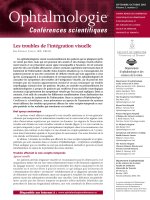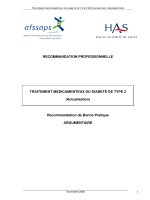Case Files Neurology - part 1 ppt
Bạn đang xem bản rút gọn của tài liệu. Xem và tải ngay bản đầy đủ của tài liệu tại đây (444.26 KB, 41 trang )
Case Files
™
Neurology
NOTICE
Medicine is an ever-changing science. As new research and clinical experience
broaden our knowledge, changes in treatment and drug therapy are required.
The authors and the publisher of this work have checked with sources believed
to be reliable in their efforts to provide information that is complete and
generally in accord with the standard accepted at the time of publication.
However, in view of the possibility of human error or changes in medical sci-
ences, neither the editors nor the publisher nor any other party who has been
involved in the preparation or publication of this work warrants that the infor-
mation contained herein is in every respect accurate or complete, and they dis-
claim all responsibility for any errors or omissions or for the results obtained
from use of the information contained in this work. Readers are encouraged to
confirm the information contained herein with other sources. For example and
in particular, readers are advised to check the product information sheet
included in the package of each drug they plan to administer to be certain that
the information contained in this work is accurate and that changes have not
been made in the recommended dose or in the contraindications for adminis-
tration. This recommendation is of particular importance in connection with
new or infrequently used drugs.
Case Files
™
Neurology
EUGENE C.TOY, MD
The John S. Dunn, Senior Academic Chief and Program
Director
The Methodist Hospital-Houston Ob/Gyn Residency
Clerkship Director, Clinical Associate Professor
Department of Obstetrics and Gynecology
University of Texas—Houston Medical School
Houston,Texas
ERICKA SIMPSON, MD
Assistant Professor, Neurology
Weill-Cornell Medical College, New York
Co-Director MDA Neuromuscular Clinics and
Director of ALS Clinical Research Division
Methodist Neurological Institute
Program Director
The Methodist Hospital Neurology Residency
Houston,Texas
MILVIA PLEITEZ, MD
Assistant Professor, Neurology
Weill-Cornell Medical College, New York
Methodist Neurological Institute
Houston,Texas
DAVID ROSENFIELD, MD
Professor, Neurology
Weill-Cornell Medical College, New York
Director EMG and Motor Control Laboratory
Methodist Neurological Institute
Houston,Texas
RON TINTNER, MD
Associate Professor, Neurology
Weill-Cornell Medical College, New York
Co-Director Movement Disorders and Rehabilitation
Center
Methodist Neurological Institute
Houston,Texas
New York Chicago San Francisco
Lisbon London Madrid Mexico City
Milan New Delhi San Juan Seoul
Singapore Sydney Toronto
Copyright © 2008 by the McGraw-Hill Companies, Inc. All rights reserved. Manufactured in the
United States of America. Except as permitted under the United States Copyright Act of 1976, no
part of this publication may be reproduced or distributed in any form or by any means, or stored
in a database or retrieval system, without the prior written permission of the publisher.
0-07-159438-8
The material in this eBook also appears in the print version of this title: 0-07-148287-3.
All trademarks are trademarks of their respective owners. Rather than put a trademark symbol
after every occurrence of a trademarked name, we use names in an editorial fashion only, and to
the benefit of the trademark owner, with no intention of infringement of the trademark. Where
such designations appear in this book, they have been printed with initial caps.
McGraw-Hill eBooks are available at special quantity discounts to use as premiums and sales
promotions, or for use in corporate training programs. For more information, please contact
George Hoare, Special Sales, at or (212) 904-4069.
TERMS OF USE
This is a copyrighted work and The McGraw-Hill Companies, Inc. (“McGraw-Hill”) and its
licensors reserve all rights in and to the work. Use of this work is subject to these terms. Except
as permitted under the Copyright Act of 1976 and the right to store and retrieve one copy of the
work, you may not decompile, disassemble, reverse engineer, reproduce, modify, create
derivative works based upon, transmit, distribute, disseminate, sell, publish or sublicense the work
or any part of it without McGraw-Hill’s prior consent. You may use the work for your own
noncommercial and personal use; any other use of the work is strictly prohibited. Your right to use
the work may be terminated if you fail to comply with these terms.
THE WORK IS PROVIDED “AS IS.” McGRAW-HILL AND ITS LICENSORS MAKE NO
GUARANTEES OR WARRANTIES AS TO THE ACCURACY, ADEQUACY OR
COMPLETENESS OF OR RESULTS TO BE OBTAINED FROM USING THE WORK,
INCLUDING ANY INFORMATION THAT CAN BE ACCESSED THROUGH THE WORK
VIA HYPERLINK OR OTHERWISE, AND EXPRESSLY DISCLAIM ANY WARRANTY,
EXPRESS OR IMPLIED, INCLUDING BUT NOT LIMITED TO IMPLIED WARRANTIES OF
MERCHANTABILITY OR FITNESS FOR A PARTICULAR PURPOSE. McGraw-Hill and its
licensors do not warrant or guarantee that the functions contained in the work will meet your
requirements or that its operation will be uninterrupted or error free. Neither McGraw-Hill nor its
licensors shall be liable to you or anyone else for any inaccuracy, error or omission, regardless of
cause, in the work or for any damages resulting therefrom. McGraw-Hill has no responsibility for
the content of any information accessed through the work. Under no circumstances shall
McGraw-Hill and/or its licensors be liable for any indirect, incidental, special, punitive,
consequential or similar damages that result from the use of or inability to use the work, even if
any of them has been advised of the possibility of such damages. This limitation of liability shall
apply to any claim or cause whatsoever whether such claim or cause arises in contract, tort or
otherwise.
DOI: 10.1036/0071482873
We hope you enjoy this
McGraw-Hill eBook! If
you’d like more information about this book,
its author, or related books and websites,
please click here.
Professional
Want to learn more?
To Dr. Alan L. Kaplan, whose generosity, clinical and educational
excellence, and impeccable character have set a high standard for
so many of us.
—ECT
To my eternal source of peace and strength, Jesus Christ;
to my son, Christopher, who is my daily inspiration and joy;
to my Mentor and Chair, Stanley H. Appel for setting a standard of
excellence and leadership—I thank you.
—EPS
❖
DEDICATION
Copyright © 2008 by the McGraw-Hill Companies, Inc. Click here for terms of use.
This page intentionally left blank
❖
CONTENTS
CONTRIBUTORS ix
ACKNOWLEDGMENTS xiii
INTRODUCTION xv
SECTION I
How to Approach Clinical Problems 1
Part 1. Approach to the Patient 3
Part 2. Approach to Clinical Problem-Solving 8
Part 3. Approach to Reading 10
SECTION II
Clinical Cases 15
Fifty-three Case Scenarios 17
SECTION III
Listing of Cases 447
Listing by Case Number 449
Listing by Disorder (Alphabetical) 450
INDEX 453
For more information about this title, click here
This page intentionally left blank
James Ling, MD
Assistant Professor, Neurology
Methodist Neurological Institute
Weill-Cornell Medical College
Houston, Texas
Lissencephaly
New Onset Seizure, Child
Subarachnoid hemorrhage
Jeetha Nair, MD
Research Post-doctoral Fellow;
Cain Foundation Laboratories;
Department of Pediatrics;
Baylor College of Medicine
Houston, Texas
Acute Spinal Injury
James W. Owens, MD, PhD
Assistant Professor of Child Neurology
Director, Medical Student Neurology Education
Departments of Neurology and Pediatric Neurology
Baylor College of Medicine
Houston, Texas
Acute Spinal Injury
Autism/Developmental Delay
Benign Rolandic Epilepsy
Cerebral Contusion
Febrile Seizure
Headache, Child
Martin Paukert, MS IV
University of Texas Medical School at Houston
Houston, Texas
Tourette Syndrome
also Principal Student Reviewer
x CONTRIBUTORS
xi
This is the first Case Files book that has originated from The Methodist
Hospital-Houston. It is dedicated to DR. ALAN L. KAPLAN, the excellent,
insightful, and compassionate chairman of the Department of Obstetrics and
Gynecology at The Methodist Hospital and professor of Obstetrics and
Gynecology at the Weill Medical College of Cornell University. He received
his medical degree in 1955 from Columbia University of Physicians and Surgeons
in New York. He completed his residency at Columbia Presbyterian Medical
Center in 1959. He then served two years in the Army, following which he
returned to Columbia Presbyterian Medical Center for fellowship training,
which he completed in 1963. He joined Baylor College of Medicine in 1963
and was with the Department of Obstetrics and Gynecology for 42 years. He
served as Professor and Director of the Division of Gynecologic Oncology.
Dr. Kaplan became a certified Diplomate of the American Board of Obstetrics
and Gynecology in 1966, and earned his certification in Gynecologic Oncology
in 1974. Dr. Kaplan is a member of numerous professional societies, many of
which relate to his specialty field—female cancers. He has served on various
editorial boards and is active on committees of both the professional organi-
zations and the hospitals at which he practices. In his clinical practice, he cares
for women with gynecologic surgical problems and female cancers. He enjoys
jogging, swimming, reading, and tennis.
This page intentionally left blank
This page intentionally left blank
xvi INTRODUCTION
PART I
1. Summary—the salient aspects of the case are identified, filtering out
the extraneous information. The student should formulate his or her
summary from the case before looking at the answers. A comparison
to the summation in the answer will help to improve one’s ability to
focus on the important data, while appropriately discarding the irrele-
vant information, a fundamental skill in clinical problem solving.
2. A straightforward answer is given to each open-ended question.
3. The Analysis of the Case, which is comprised of two parts:
a. Objectives of the Case—a listing of the two or three main princi-
ples that are crucial for a practitioner to manage the patient. Again,
the student is challenged to make educated “guesses” about the
objectives of the case on initial review of the case scenario, which
help to sharpen his or her clinical and analytical skills.
b. Considerations—A discussion of the relevant points and brief
approach to the specific patient.
PART II
Approach to the Disease Process—This has two distinct parts:
a. Definitions or neurophysiology—terminology or neuroanatomy
correlates pertinent to the disease process.
b. Clinical approach—a discussion of the approach to the clinical
problem in general, including tables, figures, and algorithms.
PART III
Comprehension Questions—Each case contains several multiple-choice ques-
tions that reinforce the material, or introduce new and related concepts.
Questions about material not found in the text will have explanations in the
answers.
PART IV
Clinical Pearls—A listing of several clinically important points that are reiter-
ated as a summation of the text and to allow for easy review such as before an
examination.
This page intentionally left blank
4 CASE FILES: NEUROLOGY
completely new problem? The duration and character of the complaint,
associated symptoms, and exacerbating/relieving factors should be
recorded. The chief complaint engenders a differential diagnosis, and
the possible etiologies should be explored by further inquiry.
CLINICAL PEARL
❖ The first line of any presentation should include age, gender, marital
status, handedness, and chief complaint. Example: A 32-year-old
married white right-handed male complains of left arm weakness
and numbness.
4. Past Medical History:
a. Major illnesses such as hypertension, diabetes, reactive airway dis-
ease, congestive heart failure, angina, or stroke should be detailed.
i. Age of onset, severity, end-organ involvement.
ii. Medications taken for the particular illness including any
recent changes to medications and reason for the change(s).
iii. Last evaluation of the condition (example: when was the last
stress test or cardiac catheterization performed in the patient
with angina?)
iv. Which physician or clinic is following the patient for the
disorder?
b. Minor illnesses such as recent upper respiratory infections should
be noted.
c. Hospitalizations no matter how trivial should be queried.
5. Past Surgical History: Note the date and type of procedure performed,
indication, and outcome. Surgeon and hospital name/location should
be listed. This information should be correlated with the surgical scars
on the patient’s body. Any complications should be delineated includ-
ing anesthetic complications, difficult intubations, and so forth.
6. Allergies: Reactions to medications should be recorded, including
severity and temporal relationship to medication. Immediate hypersen-
sitivity should be distinguished from an adverse reaction.
7. Medications: A list of medications, dosage, route of administration and
frequency, and duration of use should be developed. Prescription, over-
the-counter, and herbal remedies are all relevant. If the patient is cur-
rently taking antibiotics, it is important to note what type of infection
is being treated.
HOW TO APPROACH CLINICAL PROBLEMS 5
8. Immunization History: Vaccination and prevention of disease is one of
the principal goals of the family physician; however, recording the
immunizations received including dates, age, route, and adverse reac-
tions if any is critical in evaluating the neurology patient as well.
9. Social History: Occupation, marital status, family support, and tenden-
cies toward depression or anxiety are important. Use or abuse of illicit
drugs, tobacco, or alcohol should also be recorded.
10. Family History: Many major medical problems are genetically trans-
mitted (e.g., hemophilia, sickle cell disease). In addition, a family his-
tory of conditions such as breast cancer and ischemic heart disease can
be a risk factor for the development of these diseases. Social history
including marital stressors, sexual dysfunction, and sexual preference
are of importance.
11. Review of Systems: A systematic review should be performed but
focused on the life-threatening and the more common diseases. For
example, in a young man with a testicular mass, trauma to the area,
weight loss, and infectious symptoms are important to note. In an eld-
erly woman with generalized weakness, symptoms suggestive of car-
diac disease should be elicited, such as chest pain, shortness of breath,
fatigue, or palpitations.
Physical Examination
1. General appearance: Note mental status, alert versus obtunded, anx-
ious, in pain, in distress, interaction with other family members and
with examiner. Note any dysmorphic features of the head and body
may also be important for many inherited or congenital disorders.
2. Vital signs: Record the temperature, blood pressure, heart rate, and res-
piratory rate. An oxygen saturation is useful in patients with respiratory
symptoms. Height and weight are often placed here with a body mass
index (BMI) calculated (BMI = kg/m
2
or lb/in
2
).
3. Head and neck examination: Evidence of trauma, tumors, facial edema,
goiter and thyroid nodules, and carotid bruits should be sought. In
patients with altered mental status or a head injury, pupillary size,
symmetry, and reactivity are important. Mucous membranes should be
inspected for pallor, jaundice, and evidence of dehydration. Cervical
and supraclavicular nodes should be palpated.
4. Breast examination: Inspection for symmetry and skin or nipple retrac-
tion as well as palpation for masses. The nipple should be assessed for
discharge, and the axillary and supraclavicular regions should be
examined.
5. Cardiac examination: The point of maximal intensity (PMI) should be
ascertained, and the heart auscultated at the apex as well as base. It is
important to note whether the auscultated rhythm is regular or irregular.
Heart sounds (including S
3
and S
4
), murmurs, clicks, and rubs should be
characterized. Systolic flow murmurs are fairly common as a result of the
increased cardiac output, but significant diastolic murmurs are unusual.
6. Pulmonary examination: The lung fields should be examined system-
atically and thoroughly. Stridor, wheezes, rales, and rhonchi should be
recorded. The clinician should also search for evidence of consolida-
tion (bronchial breath sounds, egophony) and increased work of
breathing (retractions, abdominal breathing, accessory muscle use).
7. Abdominal examination: The abdomen should be inspected for scars,
distension, masses, and discoloration. For instance, the Grey-Turner sign
of bruising at the flank areas can indicate intraabdominal or retroperi-
toneal hemorrhage. Auscultation should identify normal versus high-
pitched and hyperactive versus hypoactive bowel sounds. The abdomen
should be percussed for the presence of shifting dullness (indicating
ascites). Then careful palpation should begin away from the area of pain
and progress to include the whole abdomen to assess for tenderness,
masses, organomegaly (i.e., spleen or liver), and peritoneal signs.
Guarding and whether it is voluntary or involuntary should be noted.
8. Back and spine examination: The back should be assessed for symme-
try, tenderness, or masses. The flank regions particularly are important
to assess for pain on percussion that may indicate renal disease.
9. Perform genital examination and rectal examination as needed.
10. Extremities/Skin: The presence of joint effusions, tenderness, rashes,
edema, and cyanosis should be recorded. It is also important to note
capillary refill and peripheral pulses.
11. Neurologic examination: Patients who present with neurologic com-
plaints require a thorough assessment including mental status, cranial
nerves, muscle tone, and strength, sensation, reflexes, and cerebellar
function, and gait to determine where the lesion or problem is located
in the nervous system. Locating the lesion is the first step to generat-
ing a differential of possible diagnoses and implementing a plan for
management.
a. Cranial nerves need to be assessed: ptosis (III), facial droop (VII),
hoarse voice (X), speaking and articulation (V, VII, X, XII), eye
position (III, IV, VI), pupils (II, III), smell (I); visual acuity and
visual fields, pupillary reflexes to light and accommodation; hearing
6
CASE FILES: NEUROLOGY
HOW TO APPROACH CLINICAL PROBLEMS 7
acuity and Weber and Rinne test, sensation of three branches of V
of face; shrug shoulders (XI), protrude tongue (VII).
b. Motor: Observe for involuntary movements, muscle symmetry
(right vs. left, proximal vs. distal), muscle atrophy, gait. Have
patient move against resistance (isolate muscle group, compare
one side vs. another, and use 0–5 scale).
c. Coordination and gait: Rapid alternating movements, point-to-point
movements, Romberg test, and gait (walk, heel-to-toe in straight
line, walk on toes and heels, shallow bend and get up from sitting).
d. Reflexes: biceps (C5,6), triceps (C6,7), brachioradialis (C5,6),
patellar (L2–4), ankle (S1–2).
e. Clonus and plantar reflex.
f. Sensory: Patient’s eyes should be closed, compare both sides of
body, distal versus proximal; vibratory sense (low pitched tuning
fork); subjective light touch; position sense, dermatome testing,
pain, temperature.
g. Discrimination: Graphesthesia (identify number “drawn” on
hand), stereognosis (place familiar object in patient’s hand), and
two-point discrimination.
12. Mental status examination: A thorough neurologic examination requires
a mental status examination. The Mini-Mental Status examination is a
series of verbal and non-verbal tasks that serves to detect impairments
in memory, concentration, language, and spatial orientation.
CLINICAL PEARL
❖ A thorough understanding of functional anatomy is important to
optimally interpret the physical examination findings.
13. Laboratory assessment depends on the circumstances
a. Complete blood count (CBC) can assess for anemia, leukocytosis
(infection), and thrombocytopenia.
b. Basic metabolic panel: electrolytes, glucose, blood urea nitrogen
(BUN) and creatinine (renal function).
c. Urinalysis and/or urine culture to assess for hematuria, pyuria, or
bacteruria. A pregnancy test is important in women of child-
bearing age.
d. Aspartate aminotransferase (AST), alanine aminotransferase
(ALT), bilirubin, alkaline phosphatase for liver function; amylase
and lipase to evaluate the pancreas.
e. Cardiac markers (creatine kinase myocardial band [CK-MB], tro-
ponin, myoglobin) if coronary artery disease or other cardiac dys-
function is suspected.
HOW TO APPROACH CLINICAL PROBLEMS 9
Assessing the Severity of the Disease After establishing the diagnosis, the
next step is to characterize the severity of the disease process; in other words,
to describe “how bad” the disease is. This can be as simple as determining
whether a patient is “sick” or “not sick.” Is the patient with a hemorrhagic
stroke comatose or with a “blown pupil”? In other cases, a more formal stag-
ing can be used. For example, cancer staging is used for the strict assessment
of extent of malignancy.
CLINICAL PEARL
❖ The second step is to establish the severity or stage of disease. This
usually impacts the treatment and/or prognosis.
Treating based on Stage Many illnesses are characterized by stage or severity
because this affects prognosis and treatment. As an example, a patient with mild
lower extremity weakness and areflexia that develops over 2 weeks may be care-
fully observed; however once respiratory depression occurs, then respiratory sup-
port must be given.
CLINICAL PEARL
❖ The third step is tailoring the treatment to fit the severity or “stage”
of the disease.
Following the Response to Treatment The final step in the approach to dis-
ease is to follow the patient’s response to the therapy. Some responses are clin-
ical such as improvement (or lack of improvement) in a patient’s strength; a
standardized method of assessment is important. Other responses can be fol-
lowed by testing (e.g., visual field testing). The clinician must be prepared to
know what to do if the patient does not respond as expected. Is the next step
to treat again, to reassess the diagnosis, or to follow up with another more spe-
cific test?
CLINICAL PEARL
❖ The fourth step is to monitor treatment response or efficacy. This can
be measured in different ways–symptomatically or based on
physical examination or other testing.
HOW TO APPROACH CLINICAL PROBLEMS 11
CLINICAL PEARL
❖ The more common cause of a unilateral, throbbing headache with
photophobia is a migraine, but the main concern is subarachnoid
hemorrhage. If the patient describes this as “the worst headache of
his or her life,” the concern for a subarachnoid bleed is increased.
How Would You Confirm the Diagnosis?
In the scenario above, the woman with “the worst headache” is suspected of hav-
ing a subarachnoid hemorrhage. This diagnosis could be confirmed by a CT scan
of the head and/or lumbar puncture (LP). The student should learn the limitations
of various diagnostic tests, especially when used early in a disease process. The LP
showing xanthochromia (red blood cells) is the gold standard test for diagnosing
subarachnoid hemorrhage, but it can be negative early in the disease course.
What Should Be Your Next Step?
This question is difficult because the next step has many possibilities; the
answer can be to obtain more diagnostic information, stage the illness, or
introduce therapy. It is often a more challenging question than “What is the
most likely diagnosis?” because there may be insufficient information to make
a diagnosis, and the next step may be to pursue more diagnostic information.
Another possibility is that there is enough information for a probable diagno-
sis, and the next step is to stage the disease. Finally, the most appropriate
answer may be to treat. Hence, from clinical data, a judgment needs to be ren-
dered regarding how far along one is on the road of:
1. Make a diagnosis → 2. Stage the disease → 3. Treat based on stage →
4. Follow response
Frequently, the student is taught “to regurgitate” the same information that
someone has written about a particular disease but is not skilled at identifying
the next step. This talent is learned optimally at the bedside, in a supportive envi-
ronment, with freedom to take educated guesses and with constructive feedback.
A sample scenario can describe a student’s thought process as follows:
1. Make the diagnosis: “Based on the information I have, I believe that
Mr. Smith has a left-sided cerebrovascular accident.”
2. Stage the disease: “I don’t believe that this is severe disease because
his Glasgow score is 12, and he is alert.”
3. Treat based on stage: “Therefore, my next step is to treat with oxygena-
tion, monitor his mental status and blood pressure, and obtain a CT scan
of the head.”
4. Follow response: “I want to follow the treatment by assessing his
weakness, mental status, and speech.
12 CASE FILES: NEUROLOGY
CLINICAL PEARL
❖ Usually, the vague query, “What is your next step?” is the most dif-
ficult question because the answer can be diagnostic, staging, or
therapeutic.
What Is Likely Neuroanatomical Defect?
Because the field of neurology seeks to correlate the neuroanatomy with the
defect in function, the student of neurology should constantly be learning the
function of the various brain centers and the neural conduits to the end organ.
Conveniently, neurology can be subdivided into compartments such as move-
ment disorders, stroke, tumor, and metabolic disorders for the purpose of read-
ing; yet, the patient can have a disease process that affects more than one
central nervous function.
What Are the Risk Factors for This Process?
Understanding the risk factors helps the practitioner to establish a diagnosis
and to determine how to interpret tests. For example, understanding risk fac-
tor analysis may help in the management of a 55-year-old woman with carotid
insufficiency. If the patient has risk factors for a carotid arterial plaque (such
as diabetes, hypertension, and hyperlipidemia) and complains of transient
episodes of extremity weakness or numbness, she may have either embolic or
thrombotic insufficiency.
CLINICAL PEARL
❖ Being able to assess risk factors helps to guide testing and develop
the differential diagnosis.
What Are the Complications to This Process?
Clinicians must be cognizant of the complications of a disease, so that they
will understand how to follow and monitor the patient. Sometimes the student
will have to make the diagnosis from clinical clues and then apply his or her
knowledge of the consequences of the pathologic process. For example, “A 26-
year-old male complains of severe throbbing headache with clear nasal
drainage.” If the patient has had similar episodes, this is likely a cluster
headache. However, if the phrase is added, “The patient is noted to have
dilated pupils and tachycardia,” then he is likely a user of cocaine.
Understanding the types of consequences also helps the clinician to be aware
of the dangers to a patient. Cocaine intoxication has far different consequences
such as myocardial infarction, stroke, and malignant hypertension.
HOW TO APPROACH CLINICAL PROBLEMS 13
What Is The Best Therapy?
To answer this question, not only do clinicians need to reach the correct diagno-
sis and assess the severity of the condition, but they must also weigh the situation
to determine the appropriate intervention. For the student, knowing exact dosages
is not as important as understanding the best medication, route of delivery, mech-
anism of action, and possible complications. It is important for the student to be
able to verbalize the diagnosis and the rationale for the therapy.
CLINICAL PEARL
❖ Therapy should be logically based on the severity of disease and the
specific diagnosis. An exception to this rule is in an emergent sit-
uation such as respiratory failure or shock when the patient needs
treatment even as the etiology is being investigated.
SUMMARY
1. There is no replacement for a meticulous history and physical
examination.
2. There are four steps in the clinical approach to the neurology patient:
making the diagnosis, assessing severity, treating based on severity,
and following response.
3. There are seven questions that help to bridge the gap between the text-
book and the clinical arena.
REFERENCES
Folstein MF, Folstein SE, McHugh PR. Mini-Mental State: a practical method for
grading the state of patients for the clinician. J Psychiatr Res 1975;12:189–198.
This page intentionally left blank









